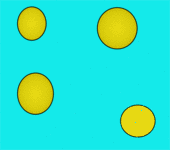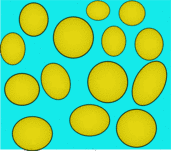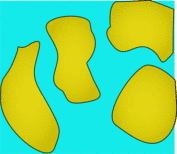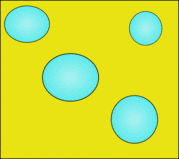Ingredients
Some cream - at least half a cup full, ideally double cream | |
| A whisk | |
| A bowl |
Instructions
Put the cream in the bowl
Whisk the cream
Notice what happens to it
Whisk it some more
Result
You should find that the cream gets thicker and thicker, becoming beautiful whipped cream, then suddenly your lovely gastronomic creation will go slightly thinner and yellow, and if you squeeze off the excess water look and taste like butter.
Explanation
Milk is basically made up of water (with some stuff dissolved in it) filled with maybe 5-10% fat globules. These globules are very small, and form a stable suspension known as a colloid.

Fat is lighter than water so will float to the top of the milk, this can be collected as cream has a lot more fat in it than normal milk. The globules still tend to repell one another so they still stay about the same size and can flow past each other easily because they are small.

If you whisk the cream you are basically stirring it really violently, this can overcome the repulsion between the globules and cause them to join up.

Because they are bigger these larger globules take longer to flow past one another so the mixture flows more slowly, and so it gets thicker. This is why whipped cream will stand up.
Eventually you reach a point however where the globules of fat become a similar size to the pot you are keeping them in. So the cream splits into areas of mostly water and areas of mostly fat. The mostly water part is known as buttermilk and can be pressed out. The other part is mostly fat with a bit of water inside, and is known as butter. Because the fat is airtight oxygen can't get into the butter and bacteria cannot grow easily. This means the butter will last much longer than the milk or cream which is why butter was originally made.

- Previous Cooling Glow Sticks
- Next An Invisible Fire Extinguisher









Comments
Add a comment